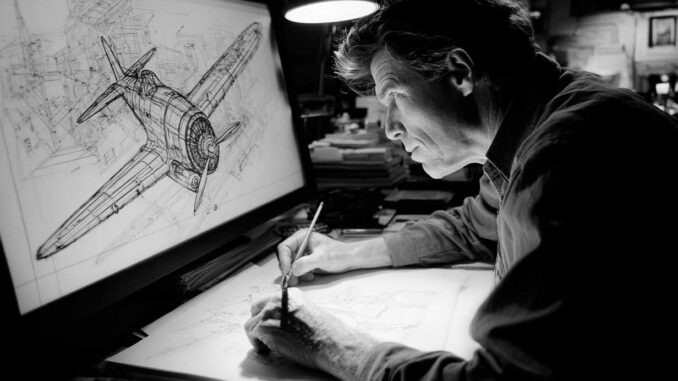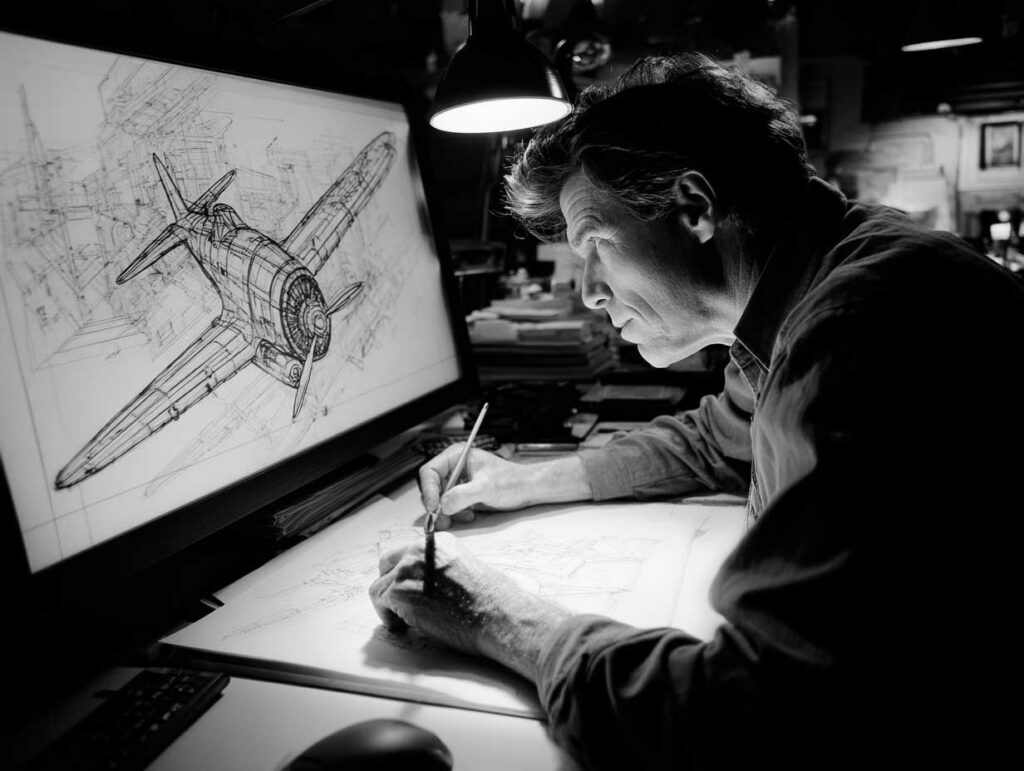
Building an experimental aircraft is accessible to amateurs, but requires compliance with standards, certification, construction, and regulations. We explain how and why.
In summary
Building an experimental aircraft is a serious but achievable adventure. We are talking about an aircraft classified as “experimental” or “amateur-built” confirmed by an aeronautical registry, intended for private, non-commercial use. The pilot-builder must carry out more than 51% of the manufacturing and assembly work to be eligible for registration in this category. The process includes planning, purchasing or building a kit or parts, applying for a special airworthiness certificate, and a test flight phase. In Europe, the regulations depend on the member states and EASA for certain certified aircraft, in addition to national rules (France: decree of January 8, 2018). Experimental aircraft allow freedom of construction and adaptation, but involve operating limitations, rigorous controls, and specific maintenance. The cost, duration (often 1,000 to 3,000 hours), and responsibilities are high. Before getting started, it is essential to understand the standards, insurance, flight procedures, and implementation constraints.
The concept of experimental aircraft: definitions and fundamentals
An amateur-built experimental aircraft (often referred to as “homebuilt”) is an aircraft built by an amateur for their own recreational or educational purposes, not for commercial use. In the United States, the Federal Aviation Administration (FAA) defines this category in section 14 CFR 21.191(g): more than 51% of the aircraft must have been assembled by the amateur builder. This regime has been in place for more than fifty years and covers more than 33,000 registered aircraft.
In Europe, the situation varies: some states authorize “amateur-built” aircraft under national regulations, but there is no single EASA regulation for all. In France, the decree of January 8, 2018 transposes the rules on aircraft built by amateurs. This category is not designed for commercial passenger transport for remuneration.
Thus, building an experimental aircraft offers freedom and innovation, but is subject to a strict regulatory framework.
Opportunities: why build your own experimental aircraft
Building your own aircraft has several advantages:
- Potentially lower cost compared to a new “factory” aircraft: in the United States, some homebuilts are built for less than $10,000, while others exceed $100,000 depending on performance.
- Complete or partial customization: choice of engine, controls, composite or metal materials, avionics.
- A unique engineering, educational, and flying experience: the builder acquires intimate knowledge of the aircraft.
- A category that allows private flying and experimentation with non-commercial configurations.
But this freedom comes with a technical commitment, serious documentation, an extended testing phase, and substantial operational limitations.
Construction: steps and technical requirements
The construction of an experimental aircraft can be broken down into several phases:
Project selection and acquisition
The future builder selects either a complete kit supplied by a manufacturer or a complete set of plans for a “scratch” build. The kit must allow verification that the builder has performed at least 51% of the work, in accordance with the “51% rule.”
Manufacturing and assembly
The builder performs welding, riveting, wing assembly, control installation, engine integration, and avionics. Monitoring must be rigorous, with logs, photos, and invoices, as this data will be examined during the inspection.
Initial inspection and certification
Once construction is complete, the aircraft must be inspected by the competent authority (FAA, DGAC, etc.) to obtain a special airworthiness certificate in the amateur-built experimental category. The manufacturer must demonstrate that the aircraft is controllable across its speed range and that it does not exhibit any dangerous characteristics.
Test flight phase
In the United States, the FAA often requires 25 to 40 hours of testing in unpopulated areas before passengers can be carried. The aircraft remains subject to operating limitations (daytime, VFR unless exempted) during this phase.
Operation and maintenance
After initial certification, the aircraft is subject to a maintenance program. Although more flexible, the operator must comply with periodic inspections (often annual). In Europe, operators must also take into account national maintenance and insurance rules.
The average construction time for an amateur-built aircraft is between 1,000 and 3,000 hours of work.
Certification and regulations: what you need to comply with
In the United States
- 51% rule: the amateur builder must perform the majority of the assembly.
- 14 CFR 91.319 imposes operational limitations: no paid transport, passenger information, VFR flights during daylight hours unless special authorization is granted.
In Europe/France
- Each member state imposes specific national rules: in France, the decree of January 8, 2018 sets the conditions for aircraft built by amateurs.
- There is no unified EASA standard for all; registration, inspection, and limitations depend on the state of registry.
Other constraints
- Insurance and registration: the aircraft must be registered and insured for private flights.
- Infrastructure: the aircraft must comply with safety and aerodrome requirements and, in some cases, may not fly at night or in IMC conditions, depending on the country.
- Private operation only: no remuneration, no transport of paying passengers or commercial cargo.

How to fly your experimental aircraft: operation and limitations
Once registered, your aircraft is operational subject to compliance with the operating conditions.
- The test phase: this requires a trial period with restrictions (geographical area, altitude, passengers).
- Operating limitations: often VFR daytime only, no commercial flights.
- Maintenance: the manufacturer or owner can often perform maintenance themselves (in some jurisdictions), but must comply with periodic inspections and keep a health record for the aircraft.
- International transfer: flying abroad with an amateur-built aircraft can be complex. In some cases, an aircraft registered in the United States but based in Europe must comply with specific operating limitations (for example, in France, homebuilts may be limited to a 28-day stay).
- Safety: According to the National Transportation Safety Board (NTSB), amateur-built aircraft accounted for approximately 10% of the general fleet in the United States but 21% of fatal accidents in a given year, which requires increased vigilance.
Practical possibilities and estimated costs
The cost varies greatly depending on the ambition of the project: a simple kit can cost tens of thousands of euros, while a high-performance aircraft with a powerful engine and complex avionics can exceed €100,000. In the United States, some homebuilts start at under $10,000, while others exceed $100,000.
Construction time: 1,000 to 3,000 hours of work. If you work 10 hours per week, this represents approximately 2 to 6 years of construction.
Materials: aluminum, composites, wood, depending on the design. The engine is often certified to reduce the certification work.
Technical advantages: customization, learning, high performance potential. Disadvantages: liability, maintenance, regulatory limitations, up-to-date documentation.
Precautions and challenges to anticipate
- Manufacturing quality: an amateur builder does not have the support of an industrial manufacturer, which can imply structural risks if methods are not rigorous.
- Documentation: logs, photos, construction log, special airworthiness certificate are essential.
- Insurance: insurers often require a history, a completed test phase, and certain higher-risk types may see increased premiums.
- Local regulations: flying in another country with an amateur-built aircraft is subject to the limitations of the country of registration and the country of operation.
- Limited operation: no compensation, sometimes limited passengers, increased risk during the test phase.
- Community and support: joining a specialized association (e.g., the Experimental Aircraft Association in the United States) provides access to resources, advice, and training.
Considering building: is it right for you?
If you are motivated, willing to devote time, patience, and budget, and accept constraints, building an experimental aircraft can be a very rewarding project. If you are simply looking for a turnkey aircraft for private transportation without compromise, a factory-certified aircraft may be more suitable.
Before you commit: check the requirements in your country, plan your workshop infrastructure, anticipate the time and budget required, commit to thorough documentation, and ensure you have sufficient training.
The “experimental aircraft” adventure is not limited to building a flying machine: it is an immersion in aeronautical engineering, maintenance, regulations, and private piloting. While the barriers are real, they can be overcome with rigor, networking, and passion.
War Wings Daily is an independant magazine.